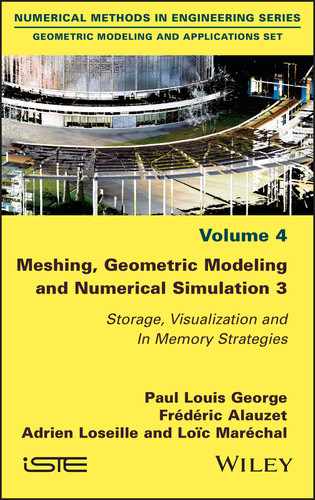Triangulations, and more precisely meshes, are at the heart of many problems relating to a wide variety of scientific disciplines, and in particular numerical simulations of all kinds of physical phenomena. In Volume 1, the theoretical foundations relating to triangulations, finite element shape functions and their interpretations as geometric patches were explored. This has made it possible to build tools that make the geometric modeling of any object possible. These elements are used in Volume 2 to treat meshing problems in their different implementations. Meshing, Geometric Modeling and Numerical Simulation 3 offers technical additions to the methods seen in the first two volumes and a significant portion of this book is dedicated to mesh visualization problems and solutions, especially those with a high degree of complexity.
Table of Contents
- Cover
- Title page
- Copyright
- Foreword
- Introduction
- Chapter 1. Data and Basic Techniques
- Chapter 2. Mesh Transformations, Patching, Merging and Immersion
- Chapter 3. Renumbering and Memory
- Chapter 4. High-Degree Mesh Visualization
- Chapter 5. Visualization of a Solution Field Related to a High-Degree Mesh
- Chapter 6. Meshes and Finite Element Calculations
- Chapter 7. Meshes and Finite Volume Calculation
- Chapter 8. Examples Through Practice
- Chapter 9. Some Algorithms and Formulas
- Conclusion and Perspectives
- Bibliography
- Index
- End User License Agreement
